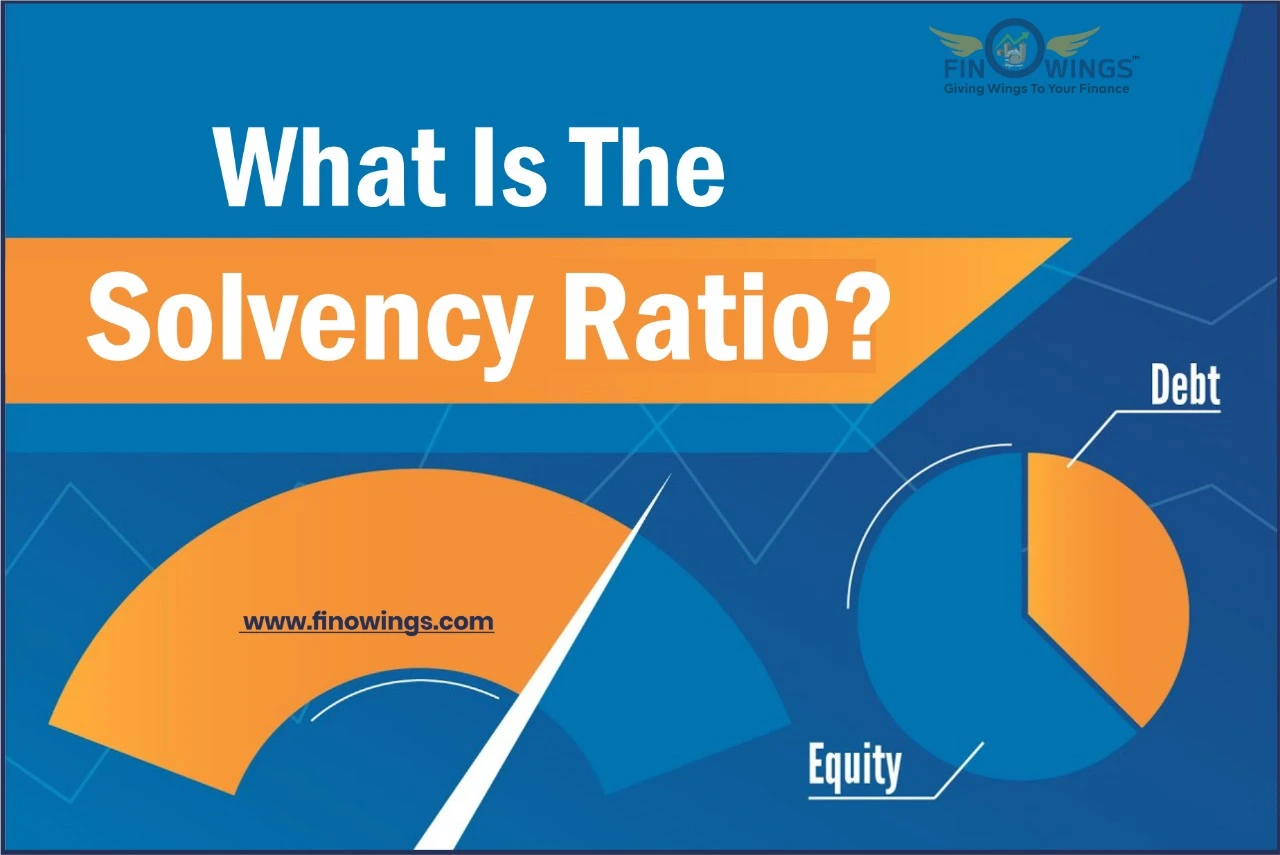Home >> Blog >> What is the Solvency Ratio? Business Debt & Solvency
What is the Solvency Ratio? Business Debt & Solvency

Table of Contents
Introduction
Most of the money needed to maintain a business does not come from the proprietors. Instead, businesses typically take on debt to conduct their businesses, which might take the form of loans, debentures, or deposits. The company must pay back all long-term debts it has incurred, plus interest.
"Solvency" refers to a company's capacity to meet its long-term financial obligations. Solvency ratios are also known as leverage ratios
1. What is the Solvency Ratio?
Solvency ratios are vital in financial research determining whether a business has enough cash flow to handle its upcoming debt commitments. Leverage ratios are another word for solvency ratios. A low solvency ratio is thought to increase a business's risk of being unable to repay its debt and increase its likelihood of doing so.
Potential company lenders employ solvency ratios to assess a company's financial stability. Businesses having a greater solvency ratio are thought to be more likely to be able to pay their debts on time, while those with a lower ratio are thought to be more likely to be a danger to lenders and creditors. Different industries have different solvency ratios, but as a general rule, a solvency ratio of 0.5 is always considered a decent number.
Liquidity ratios and solvency ratios are two different concepts. They are entirely dissimilar. Solvency ratios gauge a business's ability to pay off long-term debts, whereas liquidity ratios assess a company's capacity to handle its short-term responsibilities.
Summary
-
Using the solvency ratio, we can evaluate a company's capacity to fulfil its long-term financial commitments.
-
Divide the after-tax net revenue of a corporation by the total of its liabilities to arrive at the ratio (short-term and long-term).
-
A high solvency ratio indicates that a business can sustain long-term financial stability.
2. Explanation of Solvency Ratios
Solvency ratios are one of many criteria used to assess a business's long-term ability to remain solvent.
A solvency ratio is a broad indicator of solvency since it assesses a business's survival ability by measuring actual cash flow instead of net earnings by including depreciation and other non-cash expenses.
Concerning all liabilities, it makes an approximation of this cash flow capacity. By assessing a business's ability to pay down its long-term debt as well as the interest on that debt, a solvency ratio may be used to evaluate its long-term health.
3. Solvency Ratio Type
How to calculate the solvency ratio by using the balance sheet and income statement sections. First, determine whether the company can repay its long-term debt using solvency ratios. Investors should be highly aware of this ratio because it can be used to determine a business's or institution's solvency.
Let's examine the different sorts of solvency ratios in more depth.
3.1 Debt-to-equity ratio
Among the most popular debt solvency measures is equity debt. The D/E ratio is another way to depict it. The debt-to-equity ratio is derived by dividing a corporation's total liabilities by the equity held by shareholders. The balance sheet of the organization's financial statements is where these figures are found.
It is a crucial statistic employed to assess a corporation's financial leverage. In addition, this ratio aids in determining whether shareholder equity can pay off all obligations if corporate operations are difficult.
It is displayed as:
Long-term debt divided by shareholder funds equals the debt-to-equity ratio.
Or
Total liabilities/shareholders' equity is the debt-to-equity ratio
A high debt-to-equity ratio is a sign that a firm seems to be using debt to drive its expansion, which raises the risk for the organization. Additionally, it shows that the company is less solvent.
3.2 Debt Ratio
The debt ratio is a financial measure used to evaluate an organization's financial leverage. The amount is determined by dividing the overall liabilities by the entire capital. The riskier the business is, the bigger the debt ratio.
Bank loans, upcoming bonds, and notes, among other types of long-term indebtedness.
The debt ratio is defined as:
Long-term debt divided by capital, or long-term debt divided by net assets
A stable company will typically have a low debt-to-capital ratio, whereas a greater ratio raises concerns about the company's long-term viability. A larger debt-to-capital ratio makes it feasible to trade on equity, which enables the company's shareholders to make more money.
3.3 Proprietary Ratio or Equity Ratio
The term "equity ratio" also applies to proprietary ratios. It connects the owner's finances and the capital or net assets.
It is written as:
The equity Ratio equals either Shareholder Funds/Capital or Shareholder Funds/Total Assets.
3.4 Interest Coverage Ratio
The business's ability to pay interest on outstanding debt commitments is assessed using the interest coverage ratio. It is calculated by dividing the amount of loan interest paid for the accounting period by the company's EBIT (Earnings before interest and taxes).
It is shown as follows:
EBIT / interest on long-term debt is the interest coverage ratio.
EBIT, often known as net profit before interest and taxes, stands for earnings before interest and taxes.
A higher coverage ratio is preferable for a company's solvency, while a lower coverage ratio suggests a heavy debt load.
4. How do solvency ratios work?
Solvency ratios are a collection of measurements that evaluate an organization's ability to consistently use cash flow and assets to pay down long-term obligations, the interest that has been collected, tax deferrals, and outstanding shares. Solvency ratios examine short- and long-range cash flow to determine how successful businesses can pay off present and future debts rather than only focusing on the short-term activity. To collect financial details on long-term interest, assets, liabilities, and equity, you must compute various ratios employing certain equations. Then you must enter this data with liquidity values on a balance sheet.
5. Why is solvency important to measure?
Solvency ratios assess a business's potential for long-term debt repayment. As a result, solvency is crucial for evaluating financial measures and effectiveness and aids experts in:
-
Calculate upcoming cash flows: Knowing how corporate functions and financial activities affect cash flow requires knowing solvency ratios. Businesses can more accurately predict possible cash flow over longer periods by using information from ratio analysis.
-
Keep track of long-term liabilities: Businesses can also use Solvency ratios to monitor how well cash flow covers long-term liabilities and how much their value changes over time. The knowledge experts get from solvency assessments can assist groups in creating more efficient systems for keeping track of debt and interest.
-
Create budgets: Budgeting also requires consideration of solvency. You can more effectively allocate revenue and save expenditures using the data from solvency calculations.
-
Consider the financial risk: Solvency is frequently analyzed by shareholders and investors to determine a business's long-term profitability and expansion potential. Investors understand a company's financial condition more deeply when they see how effectively cash flow is allocated to service long-term liabilities.
6. Solvency Ratio vs. Liquidity Ratio
Solvency and liquidity ratios appear to be comparable. But these two kinds of ratios vary fundamentally from one another. Both of these financial statistics will show the financial health of a corporation. The solvency ratios are designed to shed light on a business's prospects over the long run. The liquidity ratio, on the other side, emphasizes the ability to meet short-term funding needs and preparedness to quickly transform current assets into cash.
The capability of a business to pay short-term solvency ratios commitments is shown by its liquidity ratios. Solvency ratios demonstrate its capacity to cover long-term obligations. The short-term liquidity of a corporation could seem sufficient. But it might not be able to fulfil its longer-term commitments. As an outcome, a business may seem to have a lot of liquid assets. The long-term result could be insolvency if the truth is the contrary.
7. Solvency Ratios Have Some Limitations
Despite being a well-liked tool for determining a company's financial position, the solvency ratio has certain drawbacks. For example, although a business may have less debt, its solvency situation may not be as robust as would be suggested by measures that just include debt if poor cash management procedures are contributing to large accounts payable.
Conclusion
It is important to establish the viability of a firm before an individual or group invests in it or makes a loan to it. Therefore, interested parties use solvency ratios to evaluate a business's long-term ability to pay off its debts.
A high solvency ratio denotes stability, whereas a low ratio denotes a shaky financial position. Prospective investors use the statistic in conjunction with others, including the debt-to-equity ratio, the debt-to-capital ratio, and more, to get an accurate view of the firm's liquidity and solvency.
Author
Frequently Asked Questions
Potential corporate lenders frequently utilize a solvency ratio as a significant indicator of a company's capacity to repay its long-term debt. A company's financial condition can be assessed by its solvency ratio, which determines if its cash flow is enough to cover its long-term obligations.
In other terms, the firm's capacity to pay back long-term debt, such as principal payments and perks, is reflected in its solvency (Robinson et al., 2015). The capability of the business to make a profit as a return on investment is referred to as profitability.
The amount by which an insurance company's assets outweigh its obligations is known as the solvency margin. Although many life and general insurers' solvency ratios have been declining and are getting close to the legal minimum of 1.5, Irdai's impending modification of the 150% solvency buffer level could be quite important.






.webp)










